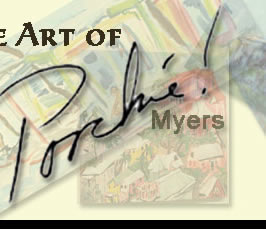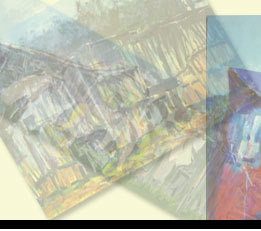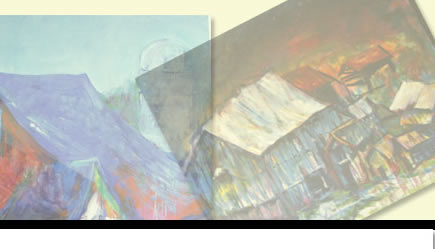Art Is Easy to Make!
Composition
Lesson 19 with Poochie Myers
Picture area:
This is the surface within the four borders of your picture
Depth:
This is the illusion of distance or a third dimension.
Line:
The line or direction the viewer's eye takes to go through the picture. The objects or forms within the picture should lead the eye to the focal point.
Value:
This is the lightness, or darkness of an area, or a shape within the picture
Design:
No matter how small or large the artist makes an object, if it is the only thing on the picture area, the viewer cannot help but to be drawn to it.
When there are several objects in the same picture, the objects should be drawn solidly, and a relationship must be shown between the objects.
Textures:
Our world is filled with a variety of forms, textures, and surfaces
Mood:
Lines, shapes, gestures, and color, and value can set the mood for the painting. The artist has control of what they want to viewer to see and how they could feel when they see it.
Perspective:
Forms look different depending on the position or viewpoint from which you see them. Changing your eye level will change your view of the forms.
If you were to look at telephone poles, or fence posts, the poles will be smaller and smaller as they go off into the distance, they will loose the color and details in the wood as they get further away.
Proportion:
To make your objects look real and to be convincing, the drawing must be in proportion. Establish the proportion of the largest mass, then the next largest….save the details of the building for last.
Rhythm and Design:
The simplest definition of design is when one, two, or three objects are repeated over and over. Rhythm can create moods such as peaceful or violent. The artist should maintain consistency throughout the painting, and decide what the most appropriate rhythm should be for the subject matter.
Ask yourself these questions about your work.
1 What line is directing the eye into the painting?
2 Do I want depth and realism or do I want a flat geometric design?
3 What mood do I want? Do the values convey this mood? Does the color?
4 Is there continuity of color and line?
5 Is every inch consistent?
6 What did I want to say? Did I say what I wanted to say?
7 Is the finished piece interesting?
|



